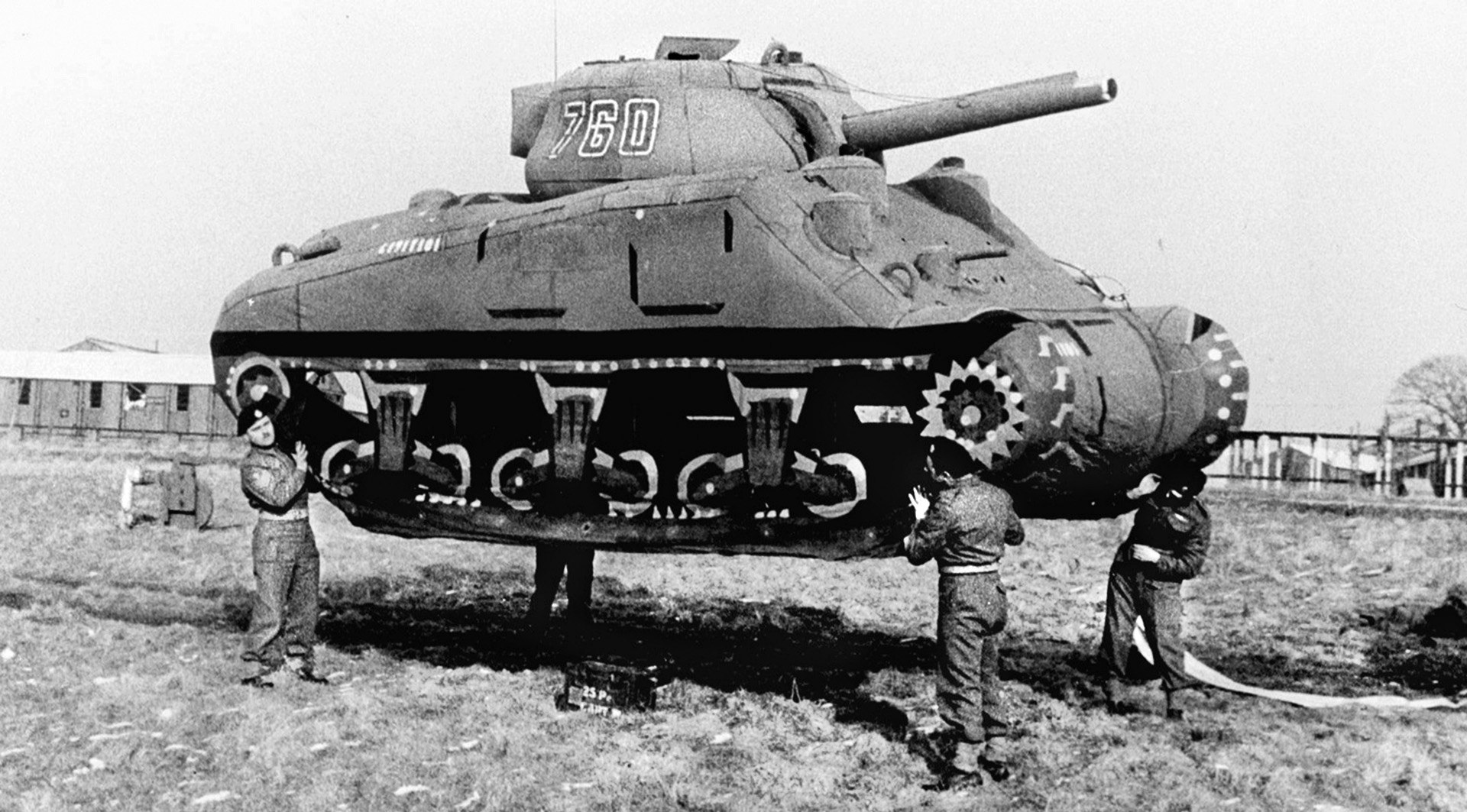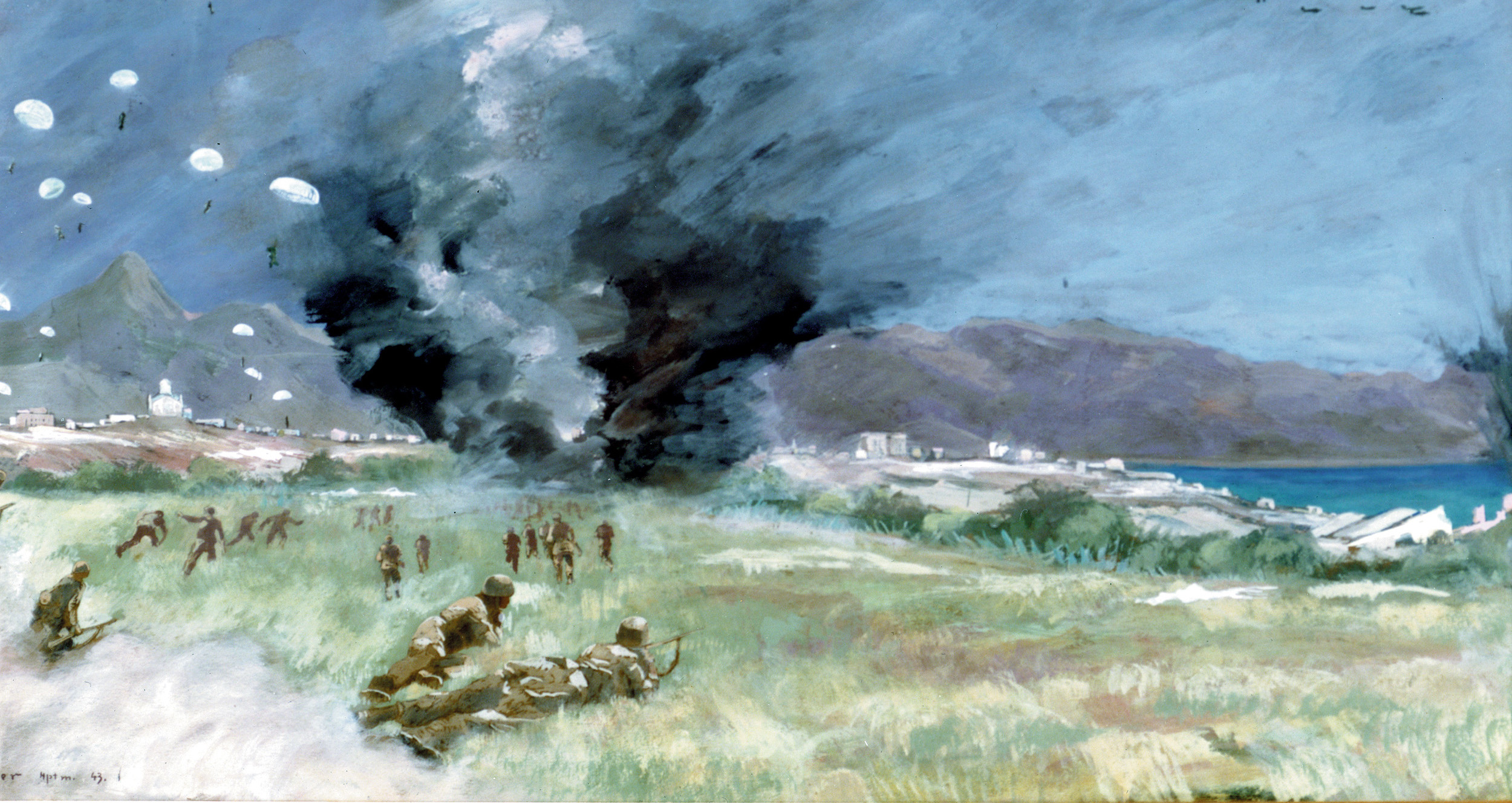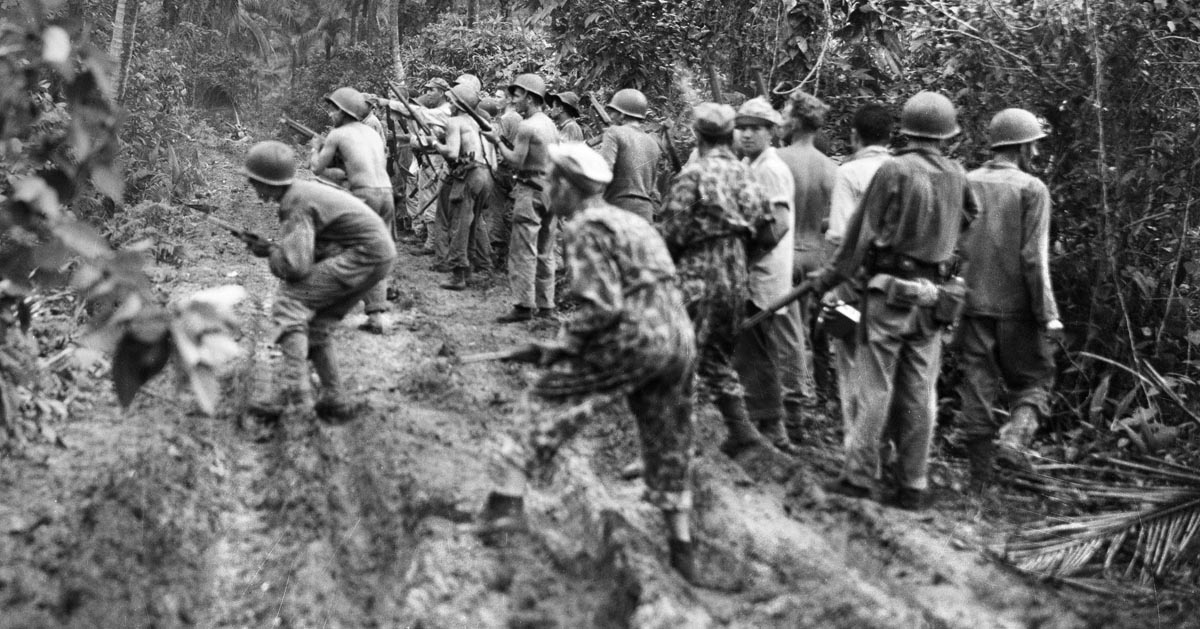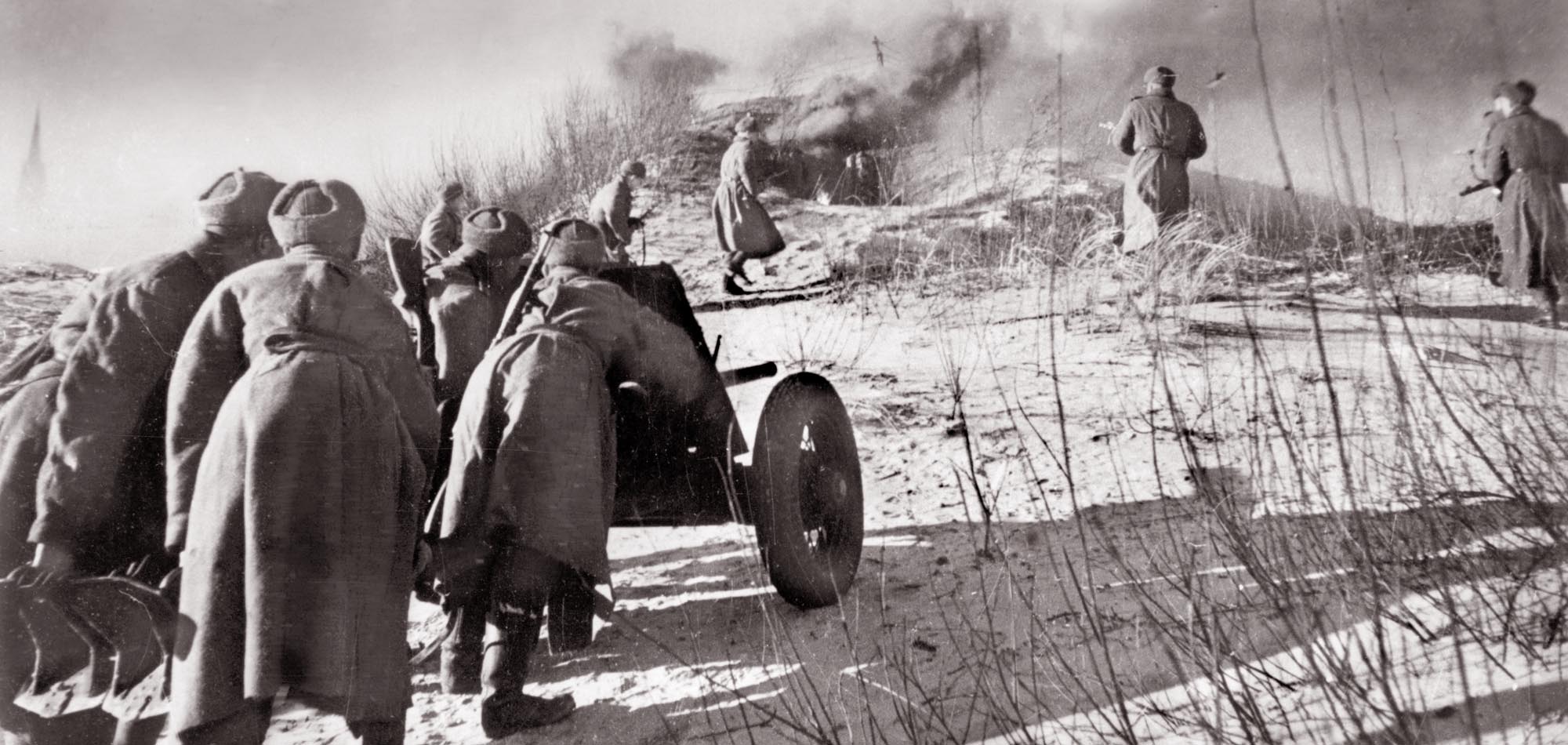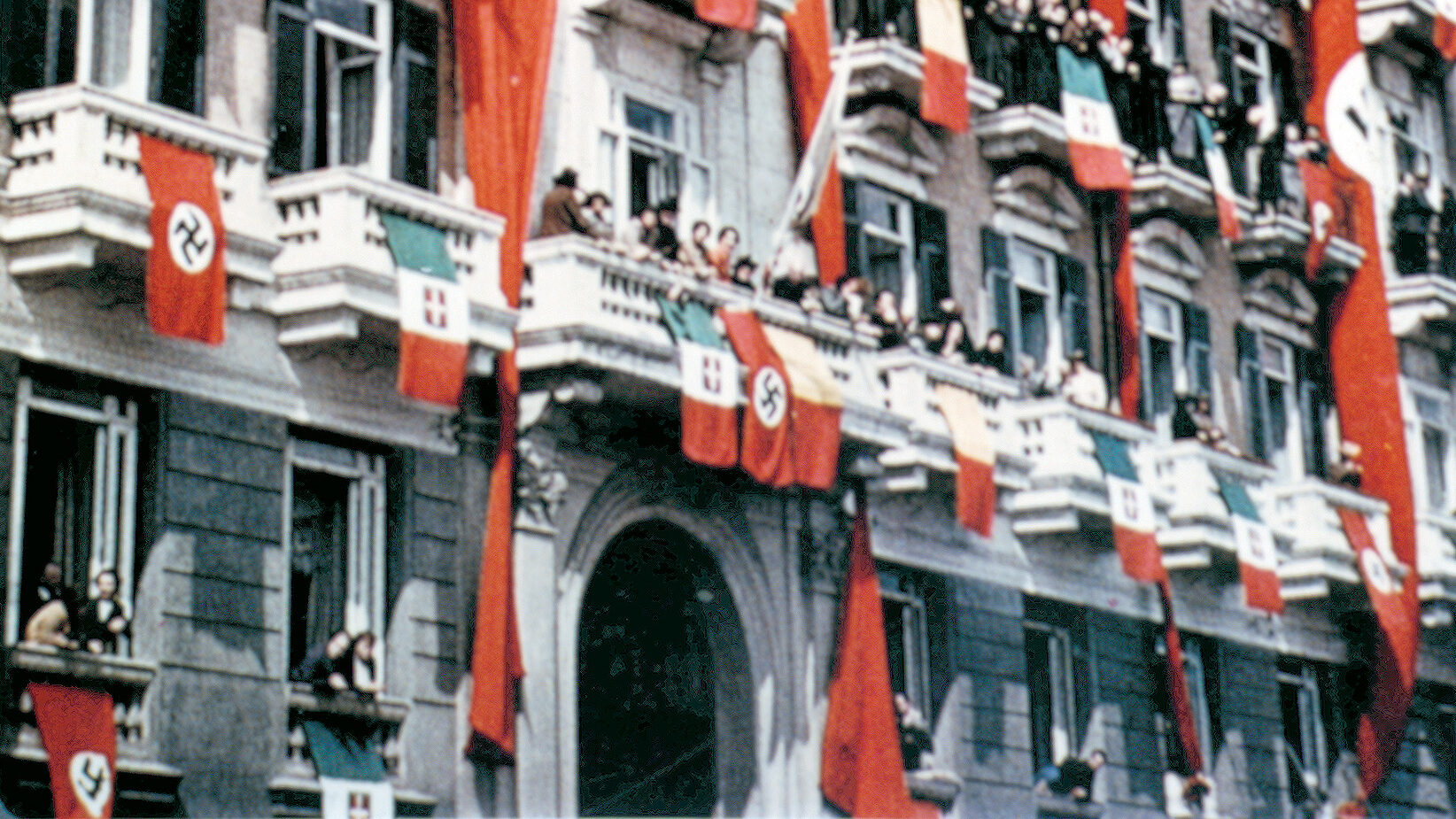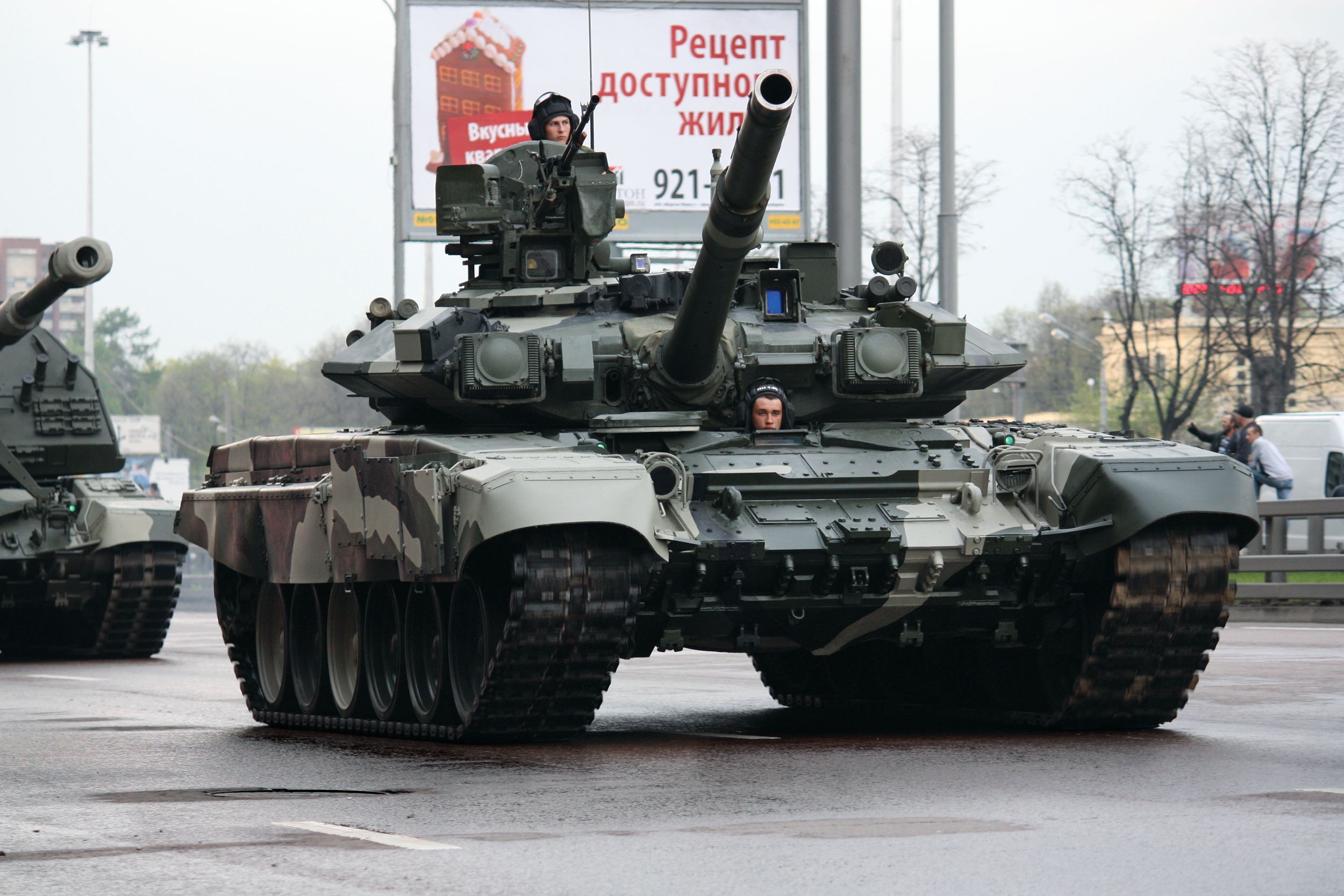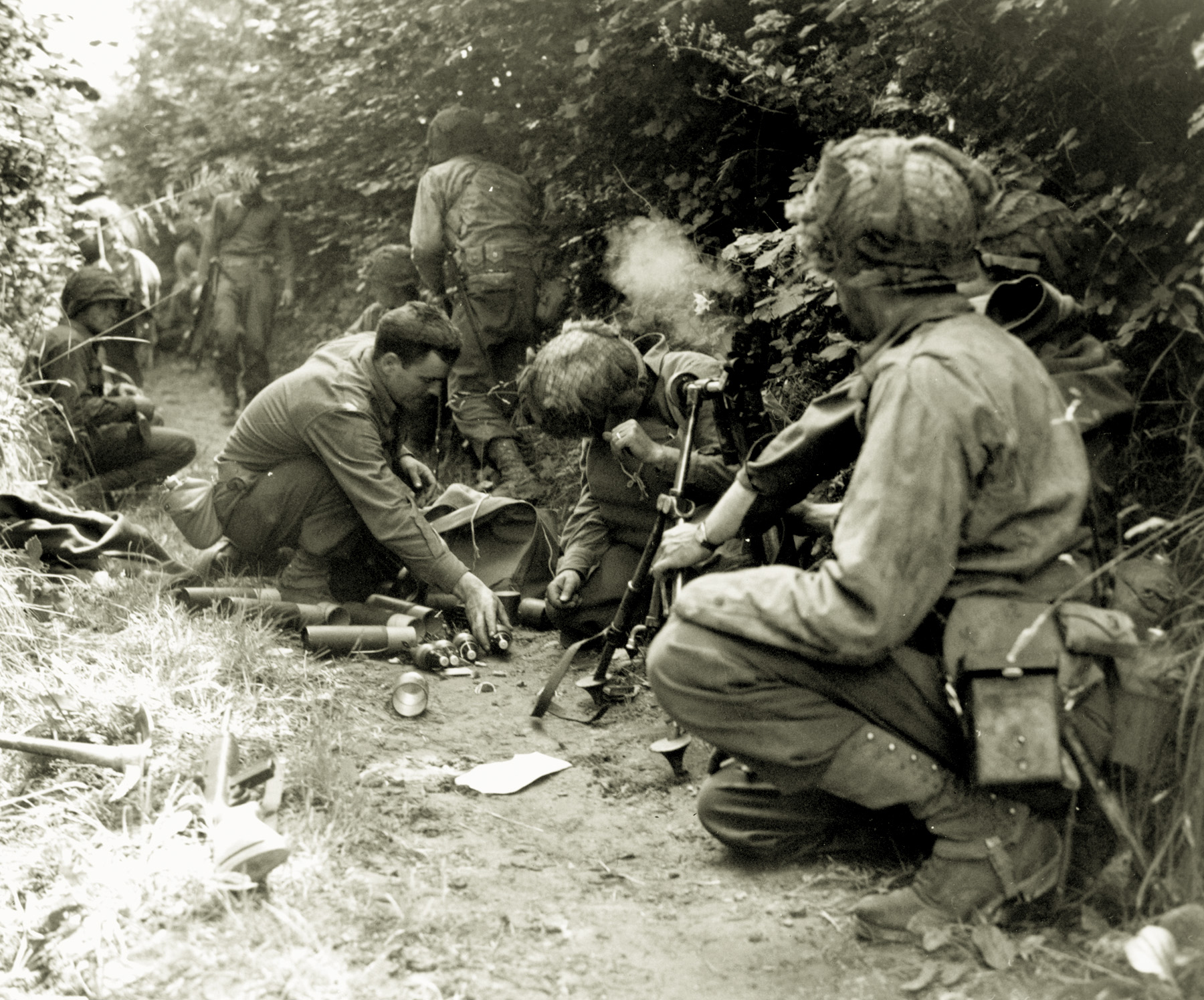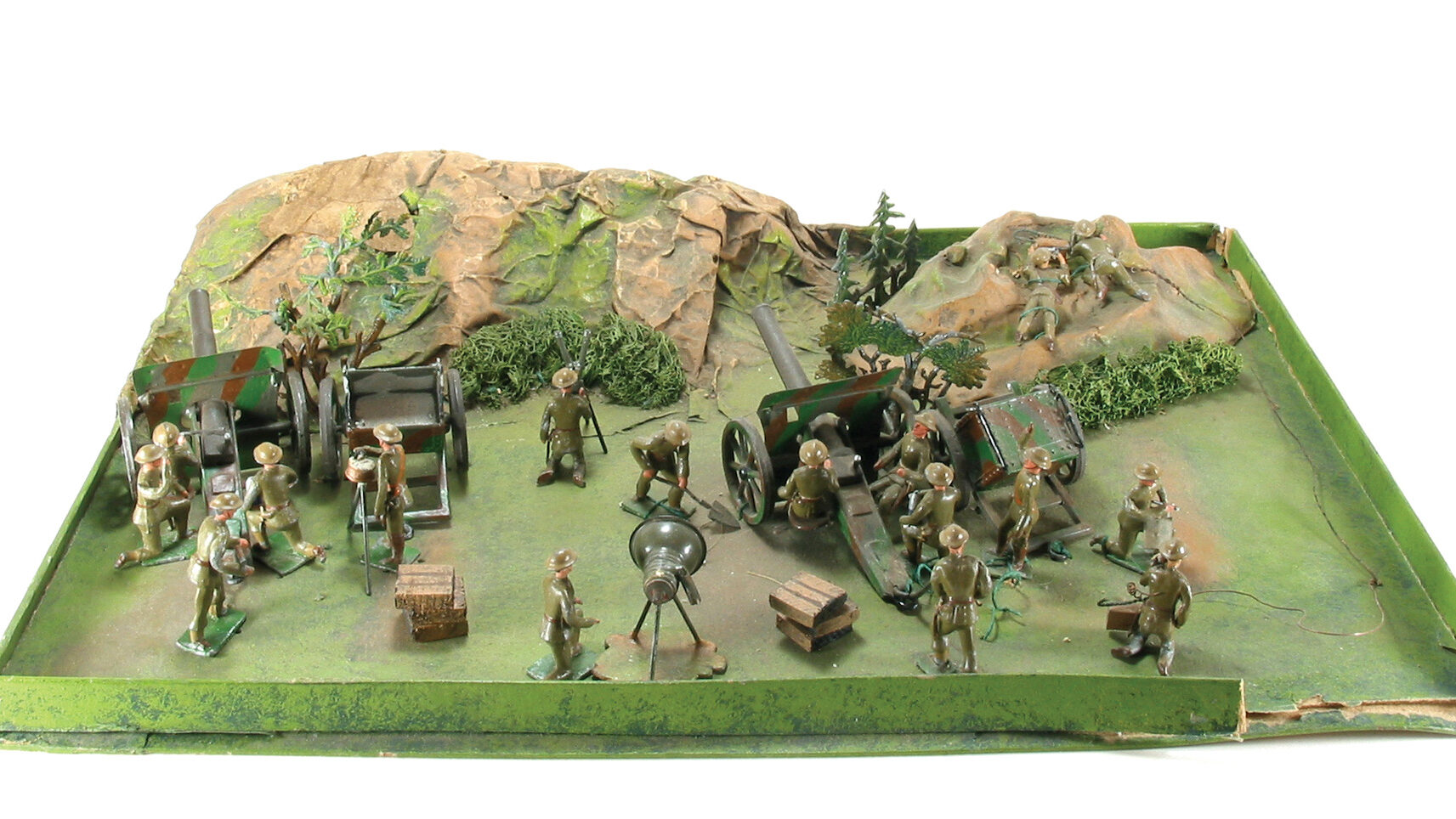by Mason B. Webb
For Operation Neptune/Overlord, the Allies had 6,939 naval vessels, 11,590 aircraft, and 156,000 infantrymen and airborne soldiers (both parachute and glider) ready to participate in the D-Day invasion of northern France on June 6, 1944. But, arguably, no unit made a greater contribution to the Allied success at Normandy than an army that didn’t exist.
The First U.S. Army Group, or FUSAG, was the brainchild of the Supreme Headquarters Allied Expeditionary Force, or SHAEF, which was certain that if the Germans could be fooled into thinking that the invading force would come across the 20-mile width of the English Channel between Dover and Calais instead of at Normandy, 100 miles from the English south coast, they would station the bulk of their forces where they would be of absolutely no use.
To make this elaborate hoax even more believable, one of the U.S. Army’s best-known generals—George S. Patton, Jr.—was put in command of it. But, since FUSAG didn’t really exist, Patton himself was merely a decoy.
There were several reasons for the Allied success in convincing the Germans that the real invasion would come at the Pas de Calais. It was all part of Operation Bodyguard, with sub-operations known as Fortitude and Quicksilver.
To pull off this scheme, German spies in Britain had been arrested, neutralized, and “turned”—threatened with death if they didn’t cooperate with the Allies.
By loading these double agents with false information that they then sent on to Germany, by June 1, 1944, the German high command was convinced that the Allies had 89 divisions in Britain, just waiting to invade, when the real number was half that.
Secondly, because German aerial reconnaissance planes were still flying over Britain, there had to be a simulated build-up of an army on the ground: tents, trucks, tanks, troops, aircraft, and even landing craft in the Dover area.
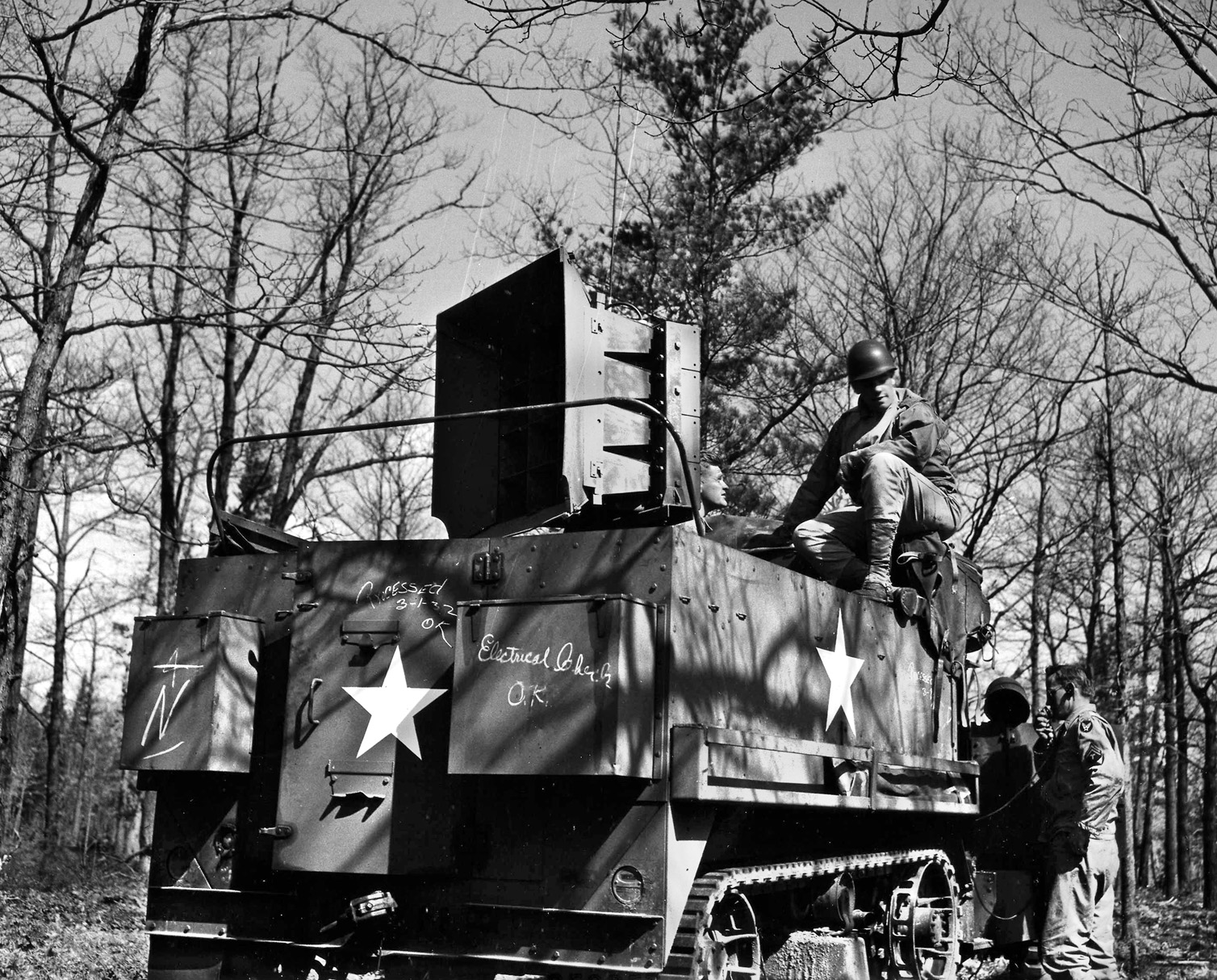
Operation Fortitude
With Overlord slated to take place along a 50-mile stretch of shoreline in Normandy, 100 miles from the south coast of England, the Allies wanted to convince the Germans that Normandy was only a feint or diversion to mask the “real” invasion force coming across the English Channel between Dover and Calais.
Operation Fortitude provided the deceptions and decoys to misdirect the Germans’ attention. And, through intercepts of German communications, it was discovered that the Germans were indeed putting the bulk of their heaviest defenses and troops in the Calais region.
Everything possible was done to enhance the Germans’ belief that Calais was the real invasion site. Farm fields in East Anglia were converted into realistic-looking (at least from the air) military encampments with roads, tents, supply dumps, and vehicles emplaced. Fake communications were instituted, with just a handful of skilled operators generating enough radio and telegraph messages to duplicate what a real army would produce.
Small numbers of GIs were detailed to drive jeeps and trucks around the camps, light smoke-generating fires to simulate cooking fires and tent stoves, and generally give the dummy installations the look of real camp activity.
These GIs were encouraged (without needing much prompting) to let slip, while drinking with locals in the pubs, that they were assigned to such-and-such division, training in the area and getting ready for the invasion. To further the illusion, they wore fake divisional sleeve insignia, and the bumpers of their jeeps bore the unit numbers of non-existent units.
The piece de resistance was added in early 1944, when Lt. Gen. George S. Patton, Jr., who had been relieved of command of the Seventh U.S. Army in Sicily when he slapped two convalescing soldiers, was appointed to command the fictitious FUSAG—First U.S. Army Group. The Germans considered Patton their most formidable foe and were certain that his “firing” was merely a ploy and that he would be picked to lead the invasion—not be “wasted” as a decoy. (This part of Bodyguard was labeled Operation Quicksilver.)
Fortitude became, as one British historian noted, “the most complex and successful deception operation in the history of warfare.”
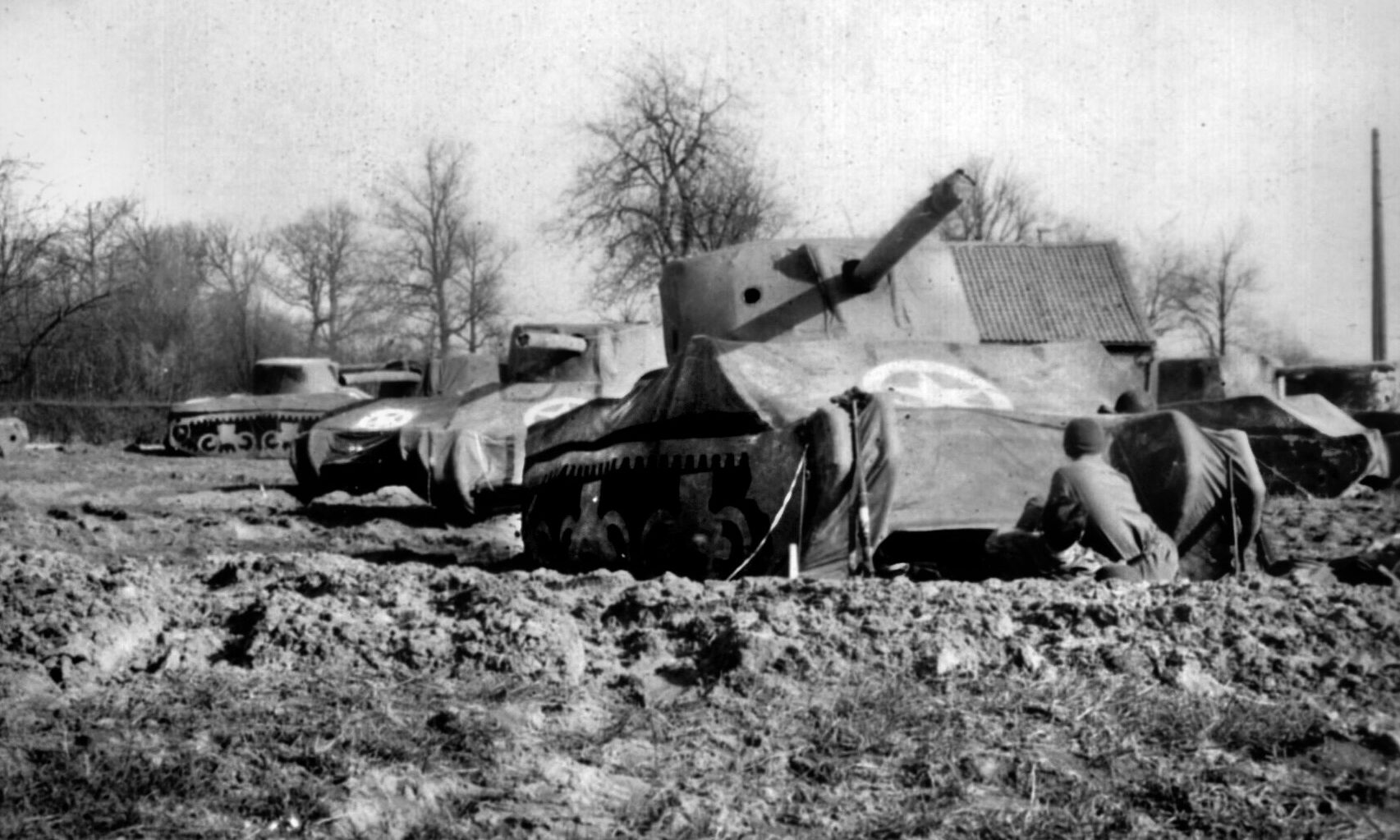
The Ghost Army
In late 1943, the U.S. Army had started its own deception unit, called the 23rd Headquarters Special Troops (later known as the “Ghost Army”). Commanded by Colonel Harry L. Reeder, the 23rd boasted an interesting collection of men with varying backgrounds and skills.
One of the 23rd’s four components units, the 603rd Engineer Camouflage Battalion Special, was made up of visual artists, painters, movie and stage set designers, former stagehands, store-window-display artists, fashion designers (such as Bill Blass) and others, who handled the inflatable rubber jeeps, tanks, trucks, and artillery pieces. (Goodyear and U.S. Rubber, which had created the barrage balloons, were two of several companies that provided the inflatable dummy vehicles.)
The Signal Company Special was in charge of developing realistic but totally spurious radio traffic that could simulate the radio transmissions of units of any size from a platoon to a division.
Flooding battlefields with realistic sound effects was the forte of the 3132nd Signal Service Company Special. By the use of pre-recorded sounds blasted from huge speakers mounted on halftracks, this unit could fool the enemy into believing that a fierce firefight was taking place over a hill, in a woods, or in a village, or that large numbers of vehicles were traveling from one place to another, or that men were constructing a Bailey bridge. The unit recorded their sound effects at Fort Knox, Kentucky.
The last unit was the 406th Engineer Combat Company Special, whose job was to provide security for the Ghost Army and to perform construction and demolition that would make the work of the other three units even more believable.
There was also a headquarters company to take care of administrative matters, bringing the total number of men in the 23rd to 1,100.
Formed at Camp Forrest, Tennessee, in 1943 (later joined by the sonic-deception unit that had been stationed at Pine Camp—today Fort Drum, New York), the 23rd began creating test dummies and having them photographed from the air and from different angles on the ground to see if they were realistic enough to fool sharp-eyed German photo interpreters.
On May 2, 1944, with the Normandy invasion just a few weeks away, the 23rd packed up and sailed to England,
where British deception artists had long been at work under the aegis of Operation Fortitude.
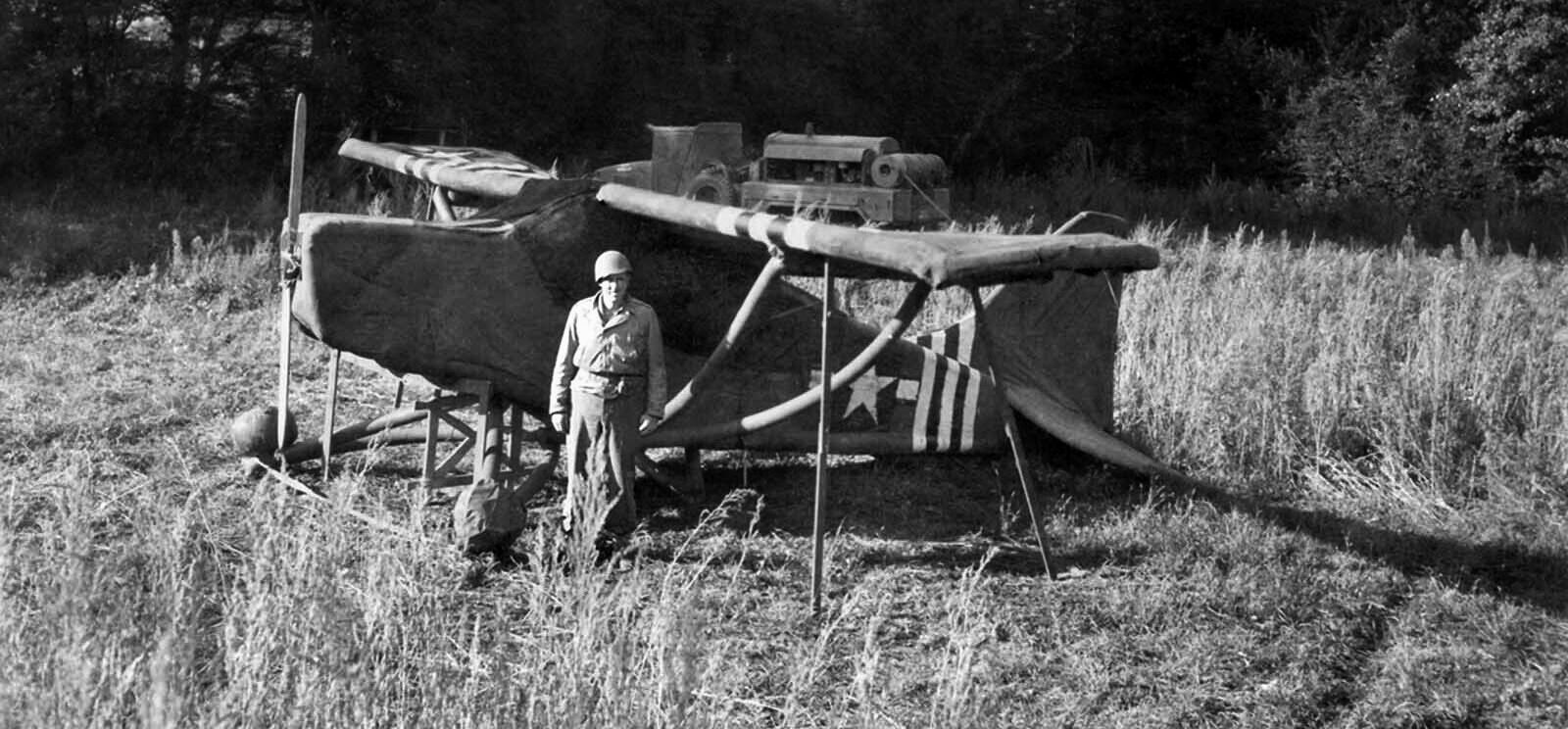
Launching Neptune/Overlord
Operation Neptune/Overlord was launched on the night of June 5-6, 1944, and, except for a few touch-and-go moments, was a rousing success. Much of the credit must go to everyone involved in Operation Fortitude, for they kept many enemy divisions that could have wreaked havoc with the landings far from Normandy.
So convincing was the Fortitude ruse that, as late as August, major German formations were still being held in the Calais area because Hitler and many in the high command were convinced that Normandy was just a large-scale feint and that Calais was where the real invasion would come. By the time reality sank in, it was too late to stop the Allies from piling onto the continent in huge numbers.
The 23rd continued to play a major role even after the Overlord landings had succeeded. The unit arrived piecemeal in France in late June and early July and was bivouacked near Sainte-Mère-Église, the town captured by the 82nd Airborne Division on D-Day morning. They immediately set to work putting up a battery of dummy artillery pieces and a group of inflatable Sherman tanks.
According to Rick Beyer and Elizabeth Sayles, authors of The Ghost Army of World War II, a couple of Frenchmen stumbled on the scene and saw four GIs picking up one of the dummy tanks. To confuse the flabbergasted Frenchmen, another soldier told them, “The Americans are very strong.”
The 23rd was beginning to adapt to its role on the battlefront, but the unit commander, Colonel Reeder, had to send a memo to his subordinate units: “The attitude of the 23rd HQs towards their mission is lopsided. There is too much MILITARY and not enough SHOWMANSHIP.
“Like it or not, the 23rd HQ must consider itself a traveling road show ready at a moment’s notice to present [itself as] the 2nd Armored Division, the 9th Infantry Division, and the Seventh Corps.
“The presentation must be done with the greatest accuracy and attention to detail. They will include the proper scenery, props, costumes, principals, extras, dialogue, and sound effects. We must remember that we are playing to a very critical radio, ground, and aerial audience. They must all be convinced.”
The 23rd was attached to Patton’s Third Army and accompanied it on the drive to Brittany, where the “traveling road show” continued to confound the enemy. When coming into a town or village, members of the 23rd always played the role of some other unit. Some of the men even dressed up—and acted like—colonels and generals to fool potential spies and collaborators.
After the successful operations in Brittany, the 23rd headed east with Third Army and enjoyed the celebrations following the liberation of Paris in August 1944. Many of the artists within the unit, when they weren’t partying, took the opportunity to draw street scenes and portraits of the people they met.
Near Metz, having been halted due to a lack of fuel, Patton was in a difficult position and worried that the Germans might counterattack his thin lines. To give the impression of greater strength, the 23rd came to the rescue, setting out two dozen inflatable tanks over the border in Luxembourg. Tank noises blared from the loudspeakers for four nights, adding to the deception. The Germans, deceived, avoided attacking through the area. Eventually, the 83rd Infantry Division arrived to plug up the line.
In mid-December 1944, the 23rd was masquerading as the 75th Infantry Division and “holding” Bastogne, a quiet area in Belgium, when suddenly the Germans crashed right through their sector. The 23rd quickly withdrew to avoid being annihilated.
Beyer and Sayles wrote, “Soldiers in nearby American units overwhelmed by the German attack were angry that the 75th Infantry Division was right next to them in line [but] was suddenly nowhere to be found.” Patton was directed by Lt. Gen. Omar Bradley to rush to the area.
Although most of the 23rd had withdrawn to the rear, the communications boys were detailed for a new assignment: fool the Germans into thinking that Patton’s 4th and 80th Infantry Divisions were going into reserve when the exact opposite was true. When the Germans attacking Bastogne were hit by the 4th and 80th, they got the surprise of their lives.
Major Ralph Ingersoll of the 23rd commented, “This bit of trickery I know did work—exactly as conceived.”
After surviving Hitler’s Ardennes Offensive—what the Americans called “the Battle of the Bulge”—the Allies went back on the offensive, pushing the Germans back into Germany. The 23rd’s services were still required to keep the enemy off balance and guessing about where the next blow would strike.
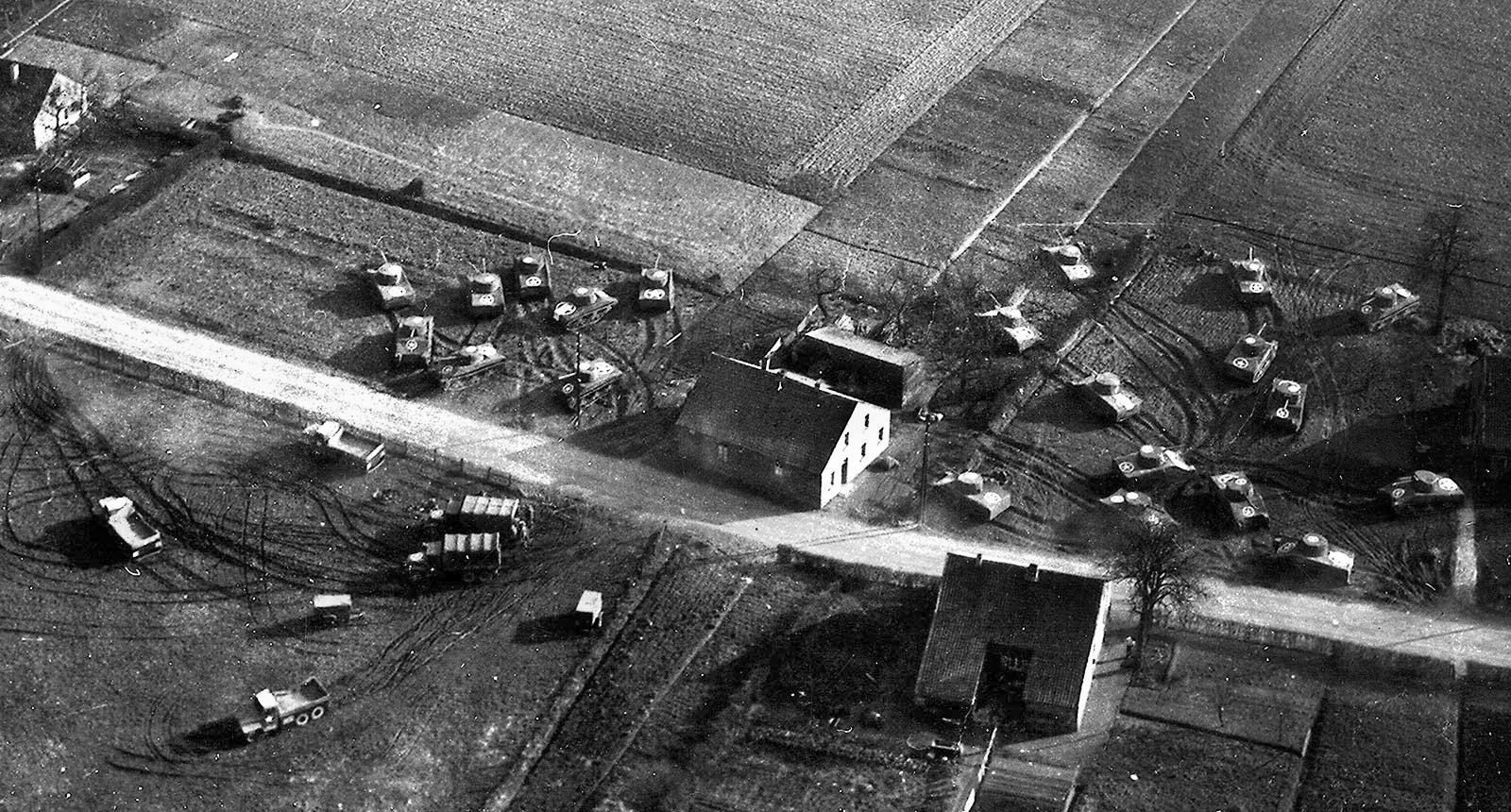
Final Mission
The 23rd’s final mission came on March 24, when they were detailed to make the Germans believe that two Ninth Army divisions—30,000 men—were about to cross the Rhine River at Krefeld, a point 10 miles south of where the actual crossing would take place. The deception was code-named Operation Viersen.
In addition to fake radio traffic, hundreds of rubber vehicles were inflated and placed in strategic locations, as well as dummy antiaircraft guns, a dummy airfield, and dummy spotter planes. The sounds of large numbers of trucks on the move and pontoon bridges being built were broadcast toward German lines across the river. Feints made by real units at the fake crossing site added to the deception.
When the real attack occurred on March 24, the attackers found only light and confused resistance. Ninth Army Commanding General William Simpson commended the 23rd in a letter to Colonel Reeder: “The [23rd] was engaged in a special project, which was an important part of the operation. The careful planning, minute attention to detail, and diligent execution of the tasks to be accomplished by the personnel of the organization reflect great credit on this unit….
“I desire to commend the officers and men of the 23rd … for their fine work and to express my appreciation for a job well done.”
While the combat forces deserve the lion’s share of credit for victory in Europe, the wide panoply of other, less well-known personnel and organizations, such as the 23rd, along with the technicians at Shepperton Studios (the manufacturers of inflatable vehicles), the double agents, and the code breakers at Bletchley Park all deserve a large share of the credit. Without a well-executed deception plan, the war might not have been won.
